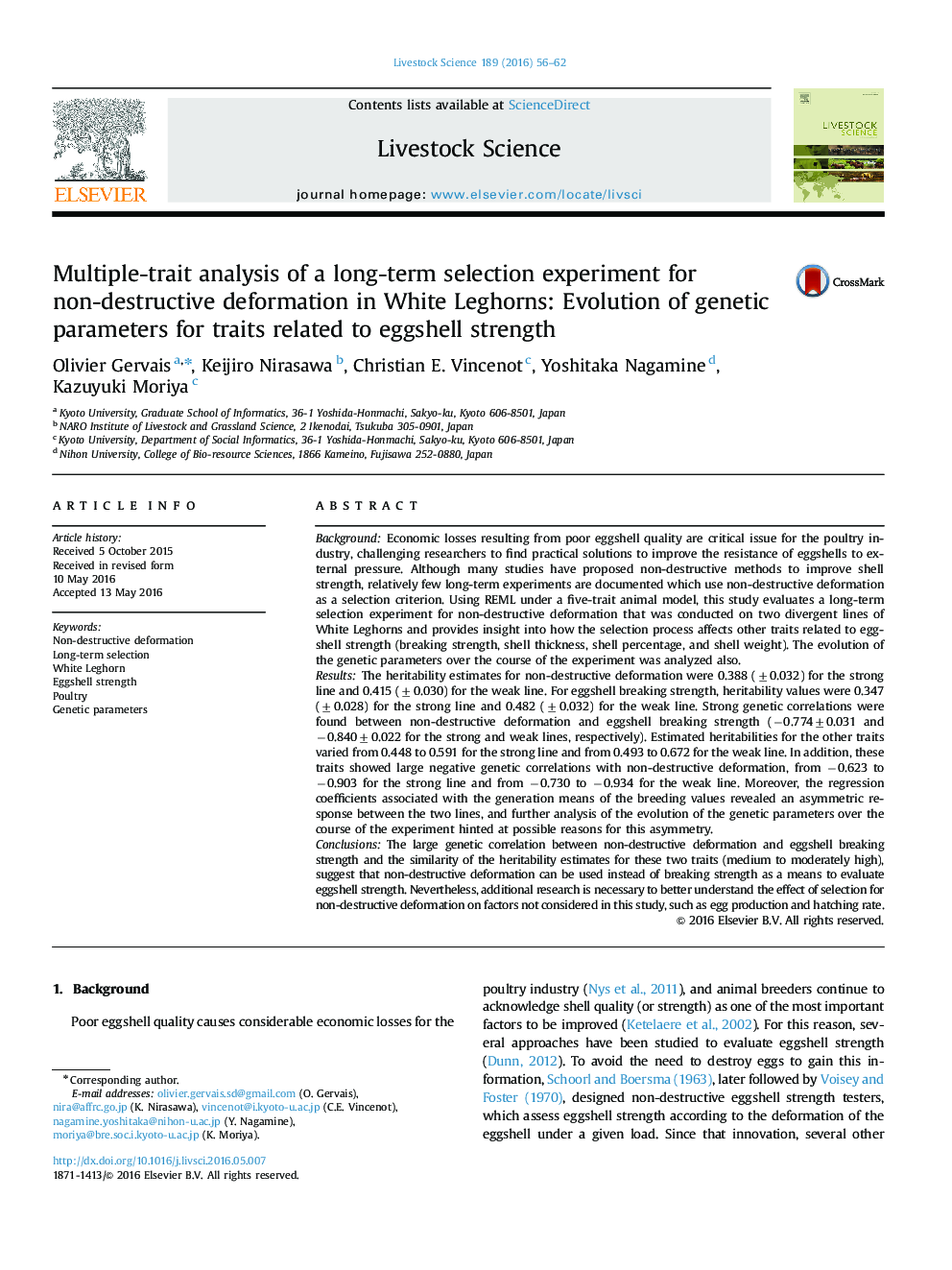| کد مقاله | کد نشریه | سال انتشار | مقاله انگلیسی | نسخه تمام متن |
|---|---|---|---|---|
| 2446907 | 1553943 | 2016 | 7 صفحه PDF | دانلود رایگان |

• Long-term two-way selection for non-destructive deformation was effective and resulted in significant genetic improvement.
• Non-destructive deformation displayed moderate heritability for both the strong and weak lines (0.388±0.032 and 0.415±0.030).
• Non-destructive deformation displayed strong genetic correlations with other eggshell traits, for both lines.
• The breeding values revealed an asymmetric response between the two lines, even after selection ceased.
BackgroundEconomic losses resulting from poor eggshell quality are critical issue for the poultry industry, challenging researchers to find practical solutions to improve the resistance of eggshells to external pressure. Although many studies have proposed non-destructive methods to improve shell strength, relatively few long-term experiments are documented which use non-destructive deformation as a selection criterion. Using REML under a five-trait animal model, this study evaluates a long-term selection experiment for non-destructive deformation that was conducted on two divergent lines of White Leghorns and provides insight into how the selection process affects other traits related to eggshell strength (breaking strength, shell thickness, shell percentage, and shell weight). The evolution of the genetic parameters over the course of the experiment was analyzed also.ResultsThe heritability estimates for non-destructive deformation were 0.388 (±0.032) for the strong line and 0.415 (±0.030) for the weak line. For eggshell breaking strength, heritability values were 0.347 (±0.028) for the strong line and 0.482 (±0.032) for the weak line. Strong genetic correlations were found between non-destructive deformation and eggshell breaking strength (−0.774±0.031 and −0.840±0.022 for the strong and weak lines, respectively). Estimated heritabilities for the other traits varied from 0.448 to 0.591 for the strong line and from 0.493 to 0.672 for the weak line. In addition, these traits showed large negative genetic correlations with non-destructive deformation, from −0.623 to −0.903 for the strong line and from −0.730 to −0.934 for the weak line. Moreover, the regression coefficients associated with the generation means of the breeding values revealed an asymmetric response between the two lines, and further analysis of the evolution of the genetic parameters over the course of the experiment hinted at possible reasons for this asymmetry.ConclusionsThe large genetic correlation between non-destructive deformation and eggshell breaking strength and the similarity of the heritability estimates for these two traits (medium to moderately high), suggest that non-destructive deformation can be used instead of breaking strength as a means to evaluate eggshell strength. Nevertheless, additional research is necessary to better understand the effect of selection for non-destructive deformation on factors not considered in this study, such as egg production and hatching rate.
Journal: Livestock Science - Volume 189, July 2016, Pages 56–62